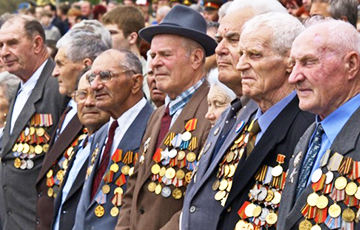ISW Explains Why Putin Needs ‘Ceasefire’ On Victory Day
28- 29.04.2025, 12:28
- 33,844

The Kremlin's devious intentions have been exposed.
Russian dictator Vladimir Putin does not see the Victory Day ‘ceasefire’ as a serious step towards a lasting peace in Ukraine.
This is reported by the Institute for the Study of War (ISW).
According to experts, the ceasefire after the energy strikes and the ‘Easter truce’ showed that the details of any future ceasefire or peace agreement should be publicly available, officially agreed in advance by all parties and provide for reliable monitoring mechanisms.
In this context, ISW noted that the Victory Day ceasefire proposed by Russian dictator Vladimir Putin does not include any additional monitoring mechanisms. Therefore, Russian sources are likely to take advantage of the absence of such mechanisms to once again fill the information space with unsubstantiated claims of ceasefire violations by Ukraine.
‘Russian officials do not seem interested in establishing effective monitoring mechanisms or a common public framework for such ceasefires, probably because it is to Russia's advantage to use the vague and unclear terms of the ceasefire against Ukraine to its benefit,’ the report said.
Putin's Devious Intentions
The Institute for the Study of War is convinced that Putin is using the unilateral ceasefire to gain an informational and military advantage in Ukraine, while US President Donald Trump is trying to use the general ceasefire as a step towards achieving a long-term and sustainable peace agreement in Ukraine.
‘Putin seems to be opportunistically announcing ceasefires during major religious and military holidays in order to get Ukraine to agree to a ceasefire or risk looking uncooperative in front of the West,’ ISW said.
In addition, analysts say the unilateral announcing of the ceasefire also allows the Kremlin chief to divert attention from his rejection of the US-Ukrainian proposal for a 30-day general ceasefire in March 2025.
Putin is also attempting to maintain the illusion of interest in peace talks while keeping full control over the terms and timing of any ceasefire agreements.
ISW notes that Russian forces took advantage of the ‘Easter ceasefire’ to shell and scout Ukrainian forward positions and damage hardware along the front line in preparing for future Russian offensives. The agency does not rule out that Russian forces are likely to use the Victory Day truce for similar preparations.
‘Putin probably views the Victory Day truce as an opportunity for Russian troops to rest before future frontline fighting, and as a way to ensure that Ukraine does not launch any significant long-range strikes against Russia during the Victory Day celebrations. Therefore, Putin probably does not view the Victory Day truce as a serious step toward a lasting peace in Ukraine,’ the Institute for the Study of War noted.
In addition, ISW is convinced that Putin's continued efforts to cover up his previous rejections of US and Ukrainian ceasefire proposals contradict Trump's stated approach of first establishing a ceasefire and then negotiating a broader peace agreement, as well as the US president's goal of achieving a lasting peace in Ukraine.
Putin's May ‘Ceasefire’
On Monday, 28 April, Russian dictator Vladimir Putin declared a temporary ‘ceasefire’ in the war with Ukraine for the second time. This time the ceasefire is to be in effect from 8 to 10 May to celebrate the 80th anniversary of ‘Victory Day’ in Moscow.











